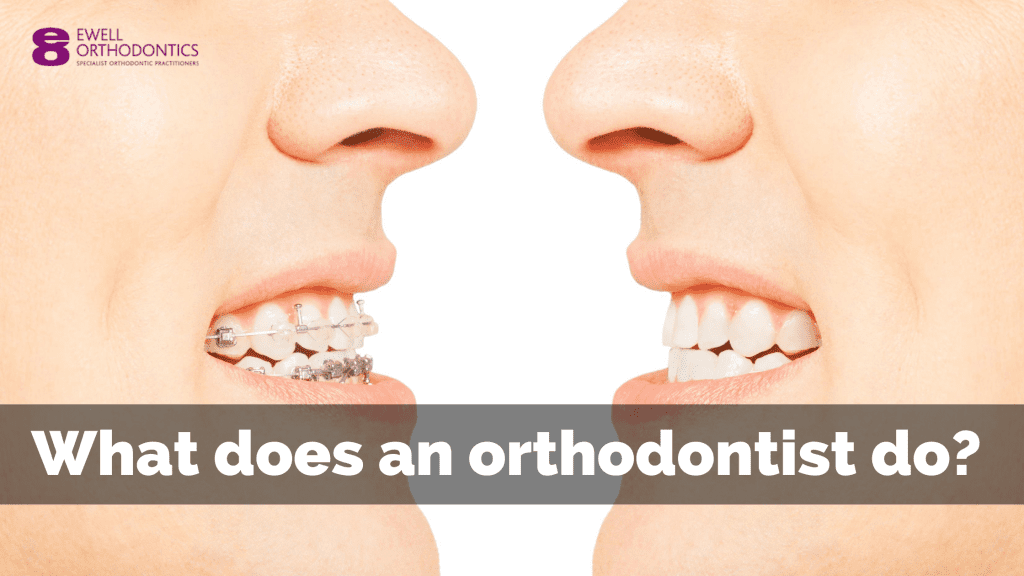Some Known Questions About Legacy Orthodontics.
An orthodontist is a dental practitioner trained to diagnose, avoid, and treat teeth and jaw irregularities. They deal with existing problems and are trained to identify problems that might create in the future. Orthodontists collaborate with individuals of every ages, from children to grownups. People commonly associate a perfect smile with healthiness.
Malocclusion, or misaligned teeth, can result in dental issues, including dental caries, gum condition, and hard or unpleasant chewing. Yet not every person is born with straight teeth. If you have a poor bite or large areas between your teeth, you might want to consult a dental professional specializing in orthodontic care.
4 Easy Facts About Legacy Orthodontics Described
( Picture Credit Scores: DigitalVision/Getty Images) Orthodontists make use of fixed and detachable oral tools, like dental braces, retainers, and bands, to alter the position of teeth in your mouth. Orthodontic therapy is for dental irregularities, including: Uneven teethBite troubles, like an overbite or an underbiteCrowded teeth or teeth that are too much apartJaw misalignmentThe objective of orthodontic therapy is to boost your bite.
A healthy bite guarantees you can eat, eat, and talk appropriately. While you could think of orthodontists as mainly for youngsters or young adults who require dental braces, they can deal with oral issues at any type of age. Orthodontists attend college, oral college, and orthodontic school. After college graduation, they invest 2 or 3 years in an orthodontic residency program.
, yet not all dental experts are orthodontists. They focus on two areas: Exactly how to correctly and safely move teeth Exactly how to properly guide development in the teeth, jaw, and faceOnce an orthodontist has completed training, they have the choice to come to be board licensed.
About Legacy Orthodontics
Imbalance, or malocclusion, is the most common reason individuals see an orthodontist. It is genetic and is the result of dimension differences in between the upper and reduced jaw or between the jaw and teeth. Malocclusion leads to tooth overcrowding, an askew jaw, or uneven bite patterns. Malocclusion is typically treated with: Your orthodontist affixes metal, ceramic, or plastic square bonds to your teeth.
If you have only small malocclusion, you may be able to use clear braces, called aligners, instead of Learn More Here traditional braces (https://www.startus.cc/company/legacy-orthodontics). Some individuals require a headgear to aid relocate teeth into line with stress from outside the mouth. After braces or aligners, you'll need to wear a retainer. A retainer is a custom tool that maintains your teeth in position.
They can create extra room in the mouth without having to pull teeth. Orthodontists use cables, medical screws, or plates to support your jaw bone.
You might need to see an orthodontist if you have: Crowding or not enough space for every one of your teethOverbite, when your top teeth come your bottom teethUnderbite, when your base teeth are too far forwardSpacing or issues with gapsCrossbite, which is when your upper teeth fit behind your bottom teeth when your mouth is closedOpen bite or an upright void between your front bottom and upper teethMisplaced midline, when the facility of your base and top teeth don't align Remedying an oral malocclusion can: Make biting, eating, and talking easierImprove the proportion of our face and your overall appearanceEase pain from temporomandibular joint conditionsDifferent your teeth and make them easier to cleanse, helping stop tooth degeneration or cavities It's usually a dental expert who first notifications misaligned teeth during a regular test.
The Buzz on Legacy Orthodontics

During your first orthodontic consultation, you'll likely have: A dental examPhotos taken of your face and smileDental X-raysPanoramic (360 degree) X-rays of your face and headImpressions to develop molds of your teethThese examinations will help your orthodontist know how to proceed with your treatment. clear braces. An orthodontist is a dental professional who's had training to treat your teeth and jaw
An orthodontist is focused on your bite, so something like a cracked tooth would certainly be managed by a dental expert. Orthodontists are focused on your bite, or the method your teeth fit together, and the straightness of your teeth.
Ever asked yourself how celebs constantly seem to have perfectly aligned teeth? The response commonly exists in the competent hands of an orthodontist. What specifically does an orthodontist do? Orthodontists are oral specialists who focus on dealing with abnormalities in the teeth and jaws. Their proficiency goes past just developing an attractive smile; it reaches improving your general oral health and function.
More About Legacy Orthodontics

, orthodontists have a varied toolkit at their disposal. These tried-and-true dental braces utilize a system of braces bonded to the teeth and attached by wires.
These removable trays are customized to considerably change the teeth's placement. In cases of narrow jaws, palatal expanders can be made use of to create area for appropriate tooth alignment.
Comments on “Legacy Orthodontics Fundamentals Explained”